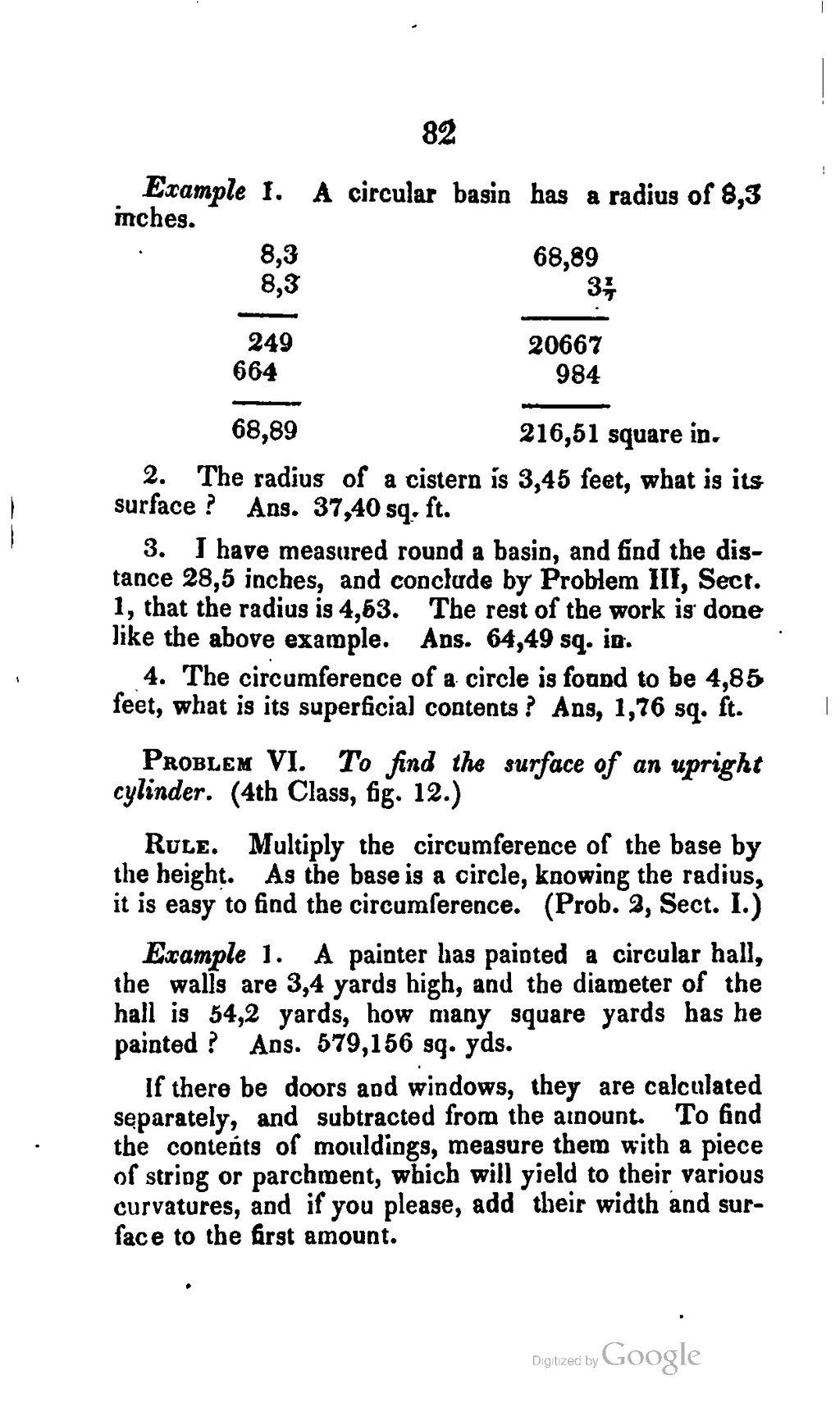Example I. A circular basin has a radius of 8,3 inches.
8,3 68,89 8,3 249 20667 664 984
68,89 216,51 square in.
2. The radius of a cistern is 3,45 feet, what is its surface ? Ans. 37,40 sq. ft.
3. I have measured round a basin, and find the dis- tance 28,5 inches, and conclude by Problem III, Sect. 1, that the radius is 4,53. The rest of the work is done like the above example. Ans. 64,49 sq. in.
4. The circumference of a circle is found to be 4,85 feet, what is its superficial contents ? Ans, 1,76 sq. ft.
Problem VI. To find the surface of an upright cylinder. (4th Class, fig. 12.)
Rule. Multiply the circumference of the base by the height. As the base is a circle, knowing the radius, it is easy to find the circumference. (Prob. 2, Sect. I.)
Example 1. A painter has painted a circular hall, the walls are 3,4 yards high, and the diameter of the hall is 54,2 yards, how many square yards has he painted ? Ans. 579,156 sq. yds.
If there be doors and windows, they are calculated separately, and subtracted from the amount. To find the contents of mouldings, measure them with a piece of string or parchment, which will yield to their various curvatures, and if you please, add their width and sur- face to the first amount.
